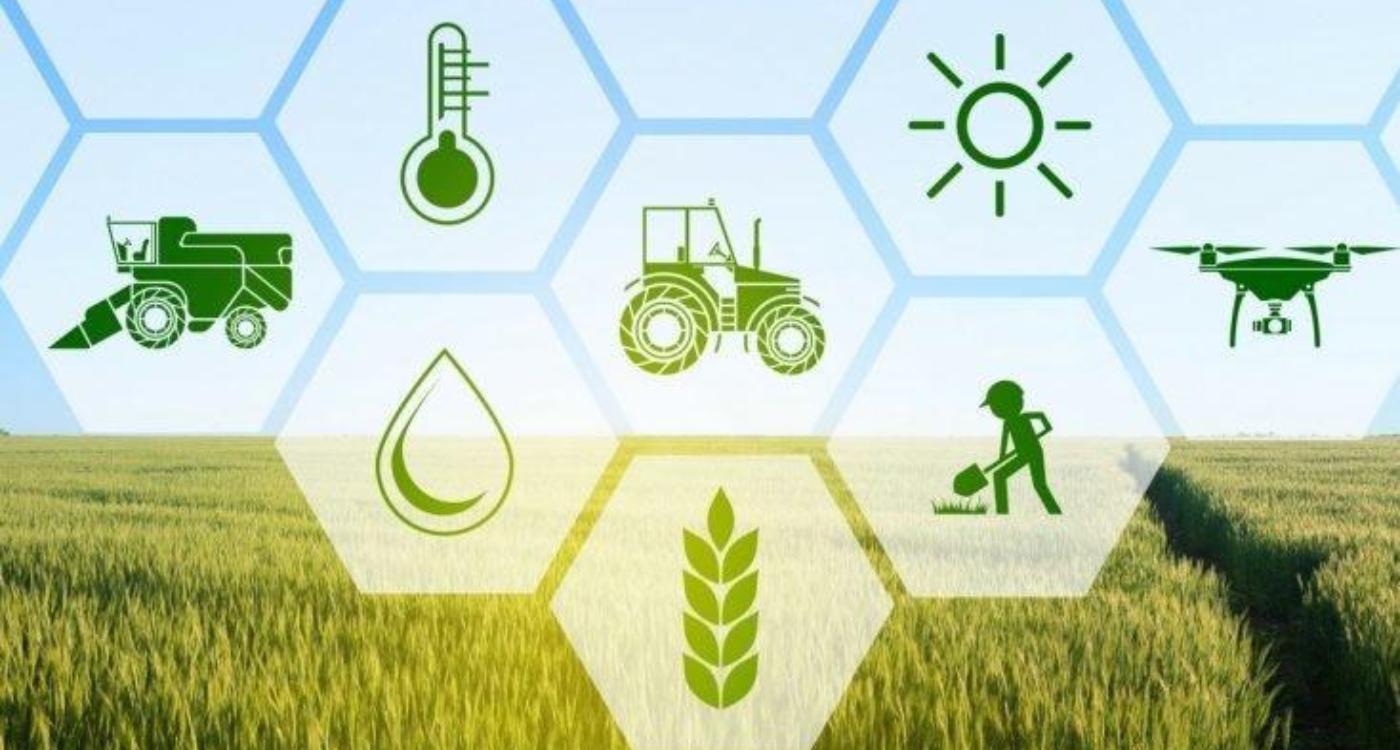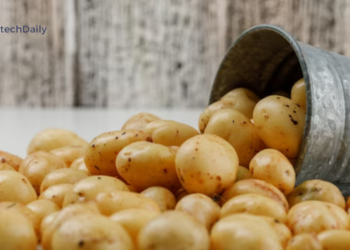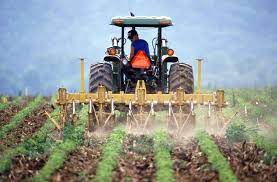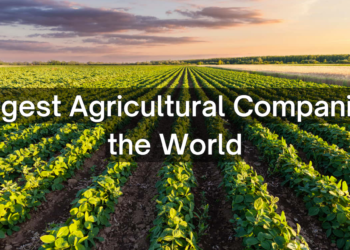In recent years, the world of agriculture has undergone a profound transformation, one driven by a powerful force: big data analytics. This fusion of technology and agriculture has given birth to what can only be described as a revolution, forever altering the way we grow, manage, and sustain our crops. “Big Data Unleashed: The Digital Agriculture Revolution” herald the dawn of a new era, where data becomes the backbone of decision-making on the farm.
This article will take you on a journey through the landscape of modern agriculture, where vast datasets are harnessed to optimize crop cultivation, resource utilization, and environmental stewardship. Join us as we explore the incredible ways in which big data is shaping the future of farming, unlocking higher yields, increased sustainability, and a brighter, more efficient tomorrow.
Big Data in Agriculture: Revolutionizing the Future of Farming

In an era defined by data, it’s no surprise that agriculture, one of the oldest and most fundamental industries, has embraced the power of big data. Big data analytics in agriculture is transforming the way we approach farming, offering solutions to age-old challenges and ushering in an era of precision and sustainability. This synergy of technology and agriculture promises not only higher yields but also a more efficient, eco-friendly, and economically viable approach to food production.
Data-Driven Farming: Enhancing Decision-Making
In the not-so-distant past, traditional farming relied heavily on age-old practices, intuition, and manual labor. Farmers often made critical decisions based on experience, local knowledge, and general rules of thumb. However, with the advent of big data analytics, agriculture has entered a new era where data is at the heart of every decision.
Farmers and agronomists now collect, store, and analyze vast quantities of data from a multitude of sources. This includes real-time weather patterns, soil composition analyses, crop health monitoring, and machinery performance metrics. This comprehensive dataset provides invaluable insights into every aspect of farming, from the moment the first seed is sown to the final harvest. These insights, drawn from data, enable precise decision-making, offering farmers a profound understanding of the unique conditions on their land and how to optimize their practices accordingly.
Precision Agriculture: Optimizing Efficiency and Sustainability
One of the most transformative applications of big data in agriculture is the concept of precision agriculture. In precision agriculture, every action on the farm is carefully calculated and optimized for maximum efficiency and sustainability. For instance, GPS-guided tractors and machinery can plant seeds with remarkable accuracy, ensuring that no inch of arable land is wasted. These machines follow precise coordinates, eliminating overlaps and gaps in planting.
Furthermore, a network of sensors monitors the conditions of the soil and the health of crops in real-time. This allows for immediate interventions when issues such as pests, diseases, or nutrient deficiencies arise. Timely responses can save crops that would have been lost otherwise and reduce the need for broad-spectrum chemical treatments, contributing to both higher yields and reduced resource wastage.
Weather Forecasting and Climate Resilience: Mitigating Risks
In the face of increasingly unpredictable weather patterns and the looming specter of climate change, big data analytics empowers farmers with advanced tools for weather forecasting and climate modeling. Detailed weather predictions provide farmers with the knowledge they need to plan their activities effectively and reduce risks associated with extreme weather events. By understanding when to plant, irrigate, or harvest, farmers can make informed decisions that safeguard their crops and ensure a more reliable food supply.
Additionally, climate data supports the development of resilient farming strategies. With historical climate records and predictions for the future, farmers can adapt to changing environmental conditions, such as shifting growing seasons or altered rainfall patterns. This adaptation helps agriculture remain productive in the face of environmental challenges, ensuring long-term food security.
Supply Chain Optimization: Reducing Waste and Meeting Demand
Big data isn’t confined to the fields alone; it extends into the entire agricultural ecosystem, including the supply chain. Data analytics aids in tracking the movement of produce from the field to the consumer’s table, significantly reducing food waste. By providing real-time information on the status and location of goods, big data helps ensure efficient distribution.
Furthermore, data analytics can identify market trends and consumer preferences. Armed with this information, farmers and agribusinesses can strategically align their production to grow crops that are in high demand. This not only minimizes the chances of overproduction but also ensures that consumers have access to the products they desire.
Sustainability and Resource Management: Protecting the Environment
Sustainability is a paramount concern in the 21st century, and big data plays a pivotal role in achieving sustainability goals in agriculture. It facilitates the efficient management of resources, minimizing the environmental footprint of farming. Through data analysis, farmers can monitor water usage, fertilizer application, and energy consumption. By optimizing these resource-intensive processes, data-driven farming reduces waste and mitigates the environmental impact of agriculture, contributing to the long-term health of the planet.
Benefits of Big Data Analytics in Agriculture

- Improved crop yields: By analyzing data on soil composition, weather patterns, and crop performance, farmers can make more informed decisions about when and where to plant crops, leading to increased crop yields.
- More efficient use of resources: Data analytics can help farmers optimize their use of resources such as water, fertilizer, and pesticides. By analyzing data on soil moisture levels, for instance, farmers can make more informed decisions about when and how much to water their crops, reducing water waste and improving efficiency.
- Reduced costs: By using data analytics to optimize their operations, farmers can reduce costs associated with waste, overuse of resources, and labor.
- Improved supply chain management: Data analytics can help farmers and agribusinesses better manage their supply chains, reducing waste and ensuring that crops are delivered to the market in a timely and efficient manner.
- Enhanced decision-making: By providing farmers with access to vast amounts of data, big data analytics can help them make more informed decisions about planting, harvesting, and resource management.
Challenges of Big Data Analytics in Agriculture
- Data collection: Collecting data on weather patterns, soil composition, and crop yields can be challenging, especially for small farmers who may not have the resources to invest in data collection technologies.
- Data quality: Data quality can be a concern in agriculture, as data may be affected by environmental factors such as weather patterns and soil conditions. Ensuring the quality and accuracy of data is critical to making informed decisions.
- Data integration: Integrating data from different sources can be challenging, as data may be collected in different formats and sources. This requires the use of specialized software and expertise to ensure that data is integrated correctly.
- Data privacy and security: Data privacy and security are critical concerns in agriculture, as sensitive information about crops, yields, and resources is collected and stored. Ensuring the privacy and security of this data is essential to maintaining the trust of farmers and agribusinesses.
- Cost: Collecting and analyzing large amounts of data can be costly, requiring investment in specialized equipment, software, and expertise.
Emerging Trends in Big Data Analytics for Agriculture
- Precision agriculture: Precision agriculture involves the use of data analytics to make more precise and informed decisions about resource management, crop planting, and harvesting. This can lead to increased efficiency and reduced waste.
- Internet of Things (IoT): The IoT involves the use of connected devices to collect and transmit data. In agriculture, IoT devices such as sensors and drones can be used to collect data on crop performance, soil moisture, and weather patterns.
- Machine learning: Machine learning involves the use of algorithms and statistical models to analyze data and make predictions. In agriculture, machine learning can be used to analyze data on crop yields and soil conditions to make more informed decisions.
- Data-driven decisions: With the use of big data analytics, farmers and agribusinesses can make data-driven decisions, based on the insights gained from analyzing vast amounts of data. This can lead to more accurate and informed decision-making, reducing the risks associated with uncertainty and guesswork.
- Predictive analytics: Predictive analytics involves the use of data, statistical algorithms, and machine learning techniques to identify the likelihood of future outcomes based on historical data. In agriculture, predictive analytics can be used to forecast weather patterns, crop yields, and demand for crops, allowing farmers and agribusinesses to make more informed decisions about planting, harvesting, and supply chain management.
Conclusion

Big data analytics has the potential to transform agriculture, providing farmers and agribusinesses with the data and insights they need to make more informed decisions. By analyzing data on soil composition, weather patterns, crop yields, and resource usage, farmers can optimize their operations, reduce costs, and improve efficiency.
However, there are also challenges associated with collecting and analyzing large amounts of data, including data quality, integration, privacy, and security. As technology continues to evolve, emerging trends such as precision agriculture, the Internet of Things, and machine learning are likely to have a significant impact on the future of agriculture.
With these tools, farmers and agribusinesses will be able to make more informed decisions, increasing efficiency, reducing waste, and improving sustainability. The use of big data analytics is an exciting development in agriculture, and it will be fascinating to see how it continues to evolve and transform the industry in the years to come.













